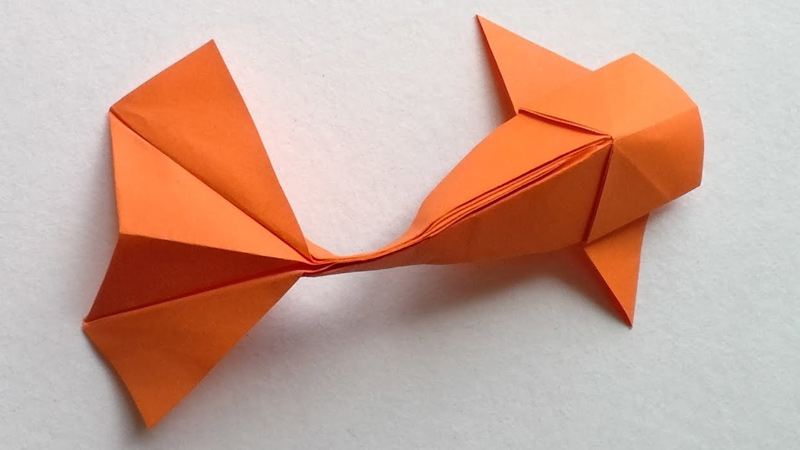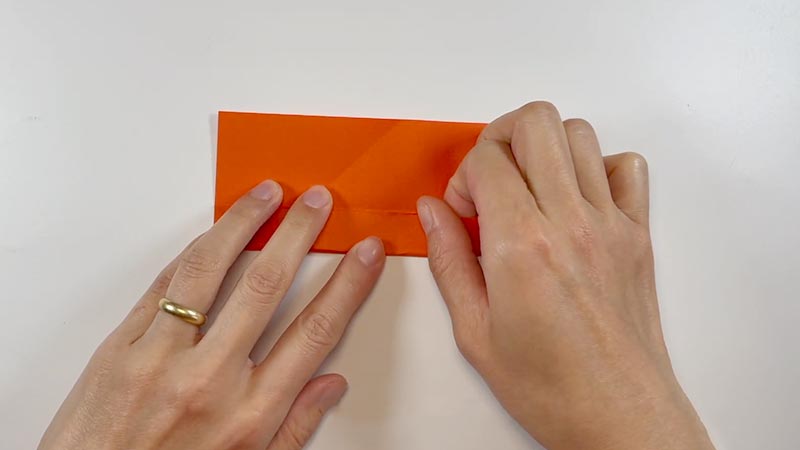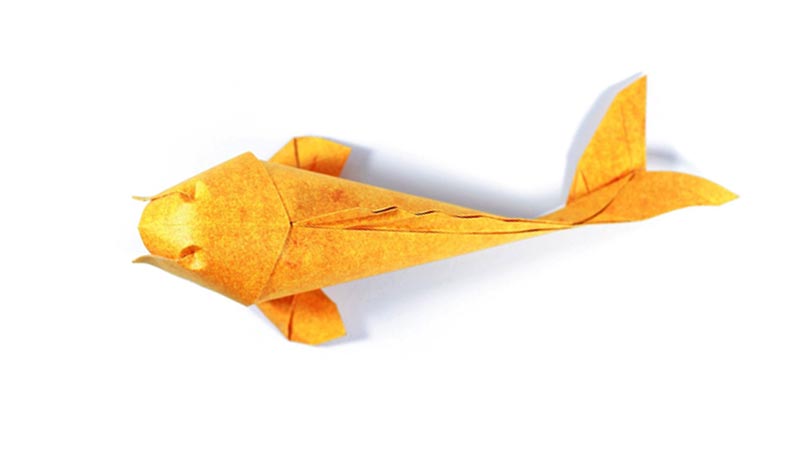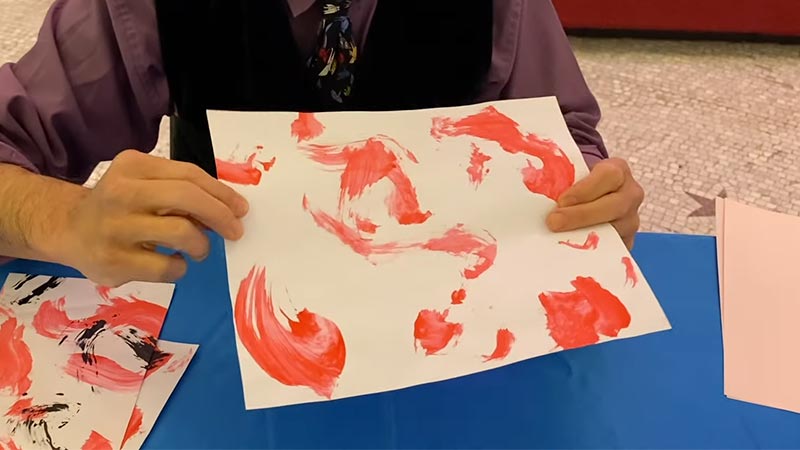Origami, the ancient art of paper folding, offers a captivating blend of creativity and precision. Within this art form, folding an origami koi fish holds a special place, symbolizing perseverance, transformation, and prosperity.
However, the success of this delicate craft hinges on the selection of the right paper. Choosing the ideal paper for your origami koi is a pivotal decision, as it impacts not only the ease of folding but also the aesthetic allure of the final creation.
In this guide, we will explore various paper options, their unique characteristics, and how your choice of paper can breathe life into your origami koi, bringing forth the cultural and artistic significance that this symbolic creature represents.

What Paper to Fold Origami Koi? Crafting Beauty and Symbolism
Selecting the right paper for folding an origami koi is a crucial step in achieving a successful and visually appealing result. The choice of paper can significantly impact the ease of folding, the aesthetics of the final product, and the overall experience of creating your origami koi.
Here are some key considerations when it comes to choosing the paper for your origami koi:
Origami Paper (Kami)
Origami paper, or “kami,” is the go-to choice for many origami enthusiasts. It is specifically designed for this ancient art and comes in various colors and patterns. Origami paper is square, lightweight, and perfect for crisp folds.
It’s an excellent choice for both beginners and experienced folders.
Double-Sided Origami Paper
Double-sided origami paper is an excellent choice if you want to create a koi with contrasting colors for the body and fins without the need for additional coloring or gluing.
These papers have different colors or patterns on each side, making them perfect for achieving visual appeal.
Solid-Colored Paper
If you have solid-colored paper, you can use it to fold a koi. You can color one side of the paper using colored pencils, markers, or paint to achieve the desired color scheme for your koi.
Patterned Paper
Patterned origami paper introduces various designs and themes to your origami koi. These patterns range from traditional motifs to modern and artistic designs, offering endless possibilities for creativity.
Handmade Paper
Handmade papers come in an array of colors and textures, adding a natural and artistic feel to your origami koi. The unique textures and irregularities of handmade paper can bring a distinctive touch to your creation.
Colored Printer or Construction Paper
While not tailored for origami, colored printer paper or construction paper can be suitable for origami koi if cut into a square and appropriate for folding. This option can be a cost-effective way to practice your origami skills.
Tissue Paper
Thin tissue paper can be used to create delicate and translucent origami koi. However, it requires extra care during folding to prevent tearing. Tissue paper can add an ethereal quality to your koi.
What Weight of Paper Is Ideal for Folding Origami Koi?

Selecting the ideal paper weight for folding origami koi is a critical decision that significantly impacts the outcome of your art. The right paper weight depends on your artistic vision, your skill level, and the desired aesthetic effect.
Here’s a breakdown of the ideal paper weight for folding origami koi:
Lightweight Paper (60-80 GSM)
Origami beginners often find lightweight paper to be the perfect starting point. It offers a forgiving and malleable nature, making it easy to fold and manipulate during the creative process.
The delicate nature of lightweight paper can be a desirable feature for origami projects, imparting an elegant and graceful appearance.
However, it’s important to note that origami koi created with lightweight paper may not hold their shape as well, especially for more complex designs.
Medium-Weight Paper (80-120 GSM)
Medium-weight paper is the balanced choice for origami koi. It offers a middle ground between ease of folding and durability, making it suitable for a wide range of origami projects. This weight range allows for intricate folds and detailed designs without being overly fragile.
Origami koi made from medium-weight paper are more likely to maintain their shape well, providing a balanced and visually appealing result. It is the go-to option for those with some origami experience looking for versatility in their paper choice.
Heavyweight Paper (Over 120 GSM)
Heavyweight paper is the heavyweight champion when it comes to durability and shape retention. If you’re aiming for a robust and long-lasting origami koi, this is the paper weight to consider.
However, it’s important to acknowledge that heavyweight paper is more challenging to fold due to its thickness. It is best suited for experienced origami enthusiasts who are comfortable with the intricacies of the craft and desire an origami koi that can withstand the test of time.
The final result boasts a sturdy and resilient quality.
What Paper Color Enhances the Beauty of Folded Origami Koi?

The choice of paper color when creating origami koi is a creative and meaningful decision. While personal preference plays a significant role, certain colors and combinations can enhance the beauty of folded origami koi.
Here are some considerations:
Traditional Colors (Red and White)
Red and white are symbolic colors for koi in Japanese culture. Red represents strength, courage, and determination, while white symbolizes purity and endurance.
Combining these traditional colors can create a classic and meaningful origami koi that symbolizes resilience and overcoming challenges.
Black and Gold
Black and gold are visually striking choices. Black represents the mysteries of life and the journey of overcoming adversity, while gold symbolizes wealth and prosperity.
Combining black and gold paper can result in a regal and eye-catching origami koi, symbolizing personal growth and success.
Contrasting Colors
Creating contrast between the body and fins of your origami koi can make it visually captivating. You can use complementary colors or high-contrast combinations, such as a red body with white fins or a black body with gold fins.
Contrasting colors can add depth and dimension to your origami koi, making it more visually interesting.
Patterned or Textured Paper
Using patterned or textured paper can add visual interest to your origami koi. Patterns resembling scales, water ripples, or other aquatic motifs can enhance the overall appearance of your creation. Patterned paper offers an artistic and visually stimulating quality to your origami koi.
Personalized Colors
Ultimately, the colors that enhance the beauty of your folded origami koi are those that align with your artistic vision and the emotions or symbolism you wish to convey.
You can choose your favorite colors or those with personal significance to make your origami koi a reflection of your individual style and creative expression.
How to Pick the Perfect Paper for Folding Origami Koi?

Origami, the art of paper folding, is a captivating and meditative practice that allows you to transform a simple sheet of paper into a work of art. When it comes to folding origami koi, the choice of paper is a crucial first step that can significantly impact the outcome of your creation.
Here’s a guide on how to pick the perfect paper for folding origami koi:
Understand the Types of Paper
Start by familiarizing yourself with the different types of paper available for origami. These include origami paper (kami), double-sided paper, solid-colored paper, patterned paper, handmade paper, colored printer or construction paper, and tissue paper.
Each type has unique qualities and can lend a distinct character to your origami koi.
Consider Paper Weight
The weight of the paper, measured in grams per square meter (GSM), plays a crucial role in the ease of folding and the structural integrity of your origami koi. Lighter-weight paper (around 60-80 GSM) is ideal for beginners as it is forgiving and easy to manipulate.
Medium-weight paper (80-120 GSM) offers a balance of versatility and durability, making it a go-to choice for many origami enthusiasts.
Heavier weight paper (over 120 GSM) is best for those with experience, as it provides durability but can be more challenging to fold due to its thickness.
Determine Your Aesthetic Vision
Think about the look you want to achieve with your origami koi. Traditional choices, like using red and white paper, can carry cultural and symbolic meanings.
Alternatively, you can opt for other colors and patterns to infuse creativity and personalization into your creation. Consider whether you want a classic, modern, or artistic appearance.
Tailor to Your Skill Level
Your experience with origami should influence your paper choice. Beginners may find origami paper or lightweight paper easier to work with, as they are more forgiving of mistakes.
If you’re an experienced folder, you can experiment with a wider range of paper options to achieve intricate designs.
Explore Texture and Finish
The texture and finish of the paper can add depth and character to your origami koi. Handmade paper, for example, provides unique textures and irregularities, enhancing the artistic feel of your creation.
Double-sided origami paper is an excellent choice if you want contrasting colors for the body and fins, saving time and offering visually appealing results.
Be Open to Creativity
Don’t be afraid to experiment. You can use solid-colored paper and add your desired color with colored pencils, markers, or paint. Colored printer or construction paper can also be adapted by cutting it into a square shape, offering a cost-effective solution for practice.
Handle Tissue Paper with Care
If you choose tissue paper, remember that it’s delicate and requires careful handling during folding to prevent tearing. Tissue paper can add an ethereal and delicate quality to your origami koi.
Convey Symbolism or Meaning
If you want your origami koi to carry specific cultural or symbolic meanings, consider traditional colors or papers with patterns that resonate with your intended message.
Express Your Individuality
Ultimately, the choice of paper is a form of artistic expression. It reflects your style, creativity, and emotions. Make your origami koi a unique work of art that represents your individuality.
FAQs
Why is choosing the right paper crucial for folding origami koi?
Choosing the right paper is crucial for origami koi as it impacts aesthetics, folding ease, cultural symbolism, structural integrity, and artistic expression.
Can I use recycled or eco-friendly paper for origami koi?
Yes, you can use eco-friendly and recycled paper for origami koi. It’s a sustainable choice that aligns with environmental values.
Are there any specific types of paper I should avoid for origami koi?
Avoid using paper that is excessively thick, rigid, or prone to tearing. These characteristics can make folding more challenging and impact the final result.
Can I use paper with writing or printing on it for origami koi?
While it’s possible to use paper with writing or printing, it’s generally recommended to use blank or patterned paper to achieve a cleaner and more aesthetically pleasing result.
Is there a specific paper size that’s ideal for origami koi?
There isn’t a strict rule for paper size, but origami paper typically comes in squares of different dimensions. The size you choose depends on your preference and the level of detail you want to achieve in your koi.
To Recap
The art of folding origami koi is a delightful journey that combines precision, creativity, and cultural symbolism. The choice of paper plays a vital role in this artistic endeavor.
Whether you opt for traditional origami paper, experiment with patterned or handmade paper, or infuse personal meaning through color, your selection breathes life into the koi’s form and story. Beyond aesthetics, it influences ease of folding and the durability of your creation.
As you master the delicate balance of structure and design, remember that each fold is a step toward capturing the essence of a powerful and transformative creature.
With the right paper, your origami koi will truly embody the spirit of perseverance, change, and prosperity, making it a meaningful work of art.
Leave a Reply